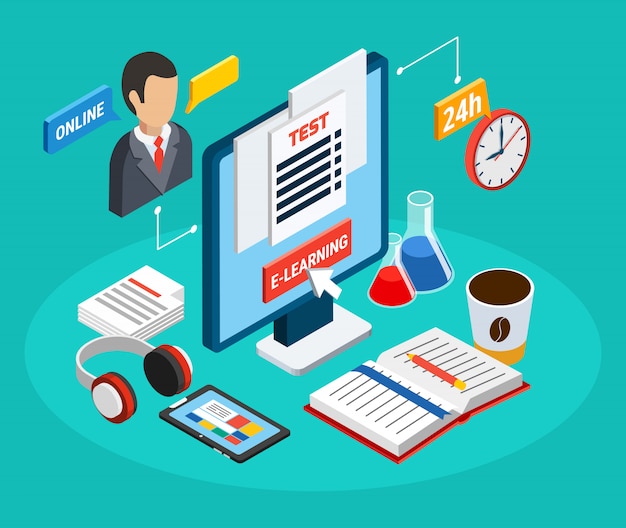Why has the concept of training remotely become so prevalent? Well, did you know that almost 25% of the US workforce (both part- + full-time) had already been working from home before the Coronavirus decided to force us into lockdowns? A 2-year study by Stanford University suggests that surveyed firms’ productivity can jump from 20% to 30% with the perfect work-from-home model.

A remote model increases employee retention reduces stress, and introduces diversity. What’s more? It can cut down costs by 50%, as reported by WBUR. Additionally, a virtual model saves commute time. As explained by Scott Mautz, a former executive at Procter & Gamble, in the same report: “In San Francisco, over a lifetime, if you commute three to four days a week, you’re talking about giving up 500 days of your life to commuting.”
Work from home | Statistics

Interestingly, all of these stats are numbers from an era BEFORE the new normal. Today, organizations are forcibly operating from dispersed locations. And the challenging part? No one really got the lead time to prepare themselves! However, you can see the figures above and understand that working from home offers significant benefits. You just need to tap into its vast potential.
HOW? For increased productivity and efficiency, the first step is training remotely and upskilling your employees. Now, in the absence of face-to-face interactions, many corporates believe the ‘training remotely’ task to be challenging. But it need not be. With the right tools and tips, training remotely is a breeze! To help you get started, here is our compilation of the five best strategies to deliver efficient remote training sessions.
Table of Contents
Training Remotely: 5 Clever Strategies to Effectively Upskill Your Remote Employees
Connect Your Company Goals to the Training Sessions

In these changing times, your learning goals might have changed as well. Since now, communication is a constraint, the best way to go forward is to simplify your mission. Make your learning modules more focused and simpler.
Try to introduce learners to new technologies, processes, or systems only if the knowledge gained from these sessions positively impacts your organization’s growth. There is no need to equip employees with know-how about subjects that they will never use. Additionally, when you inform them about a specific training session, tell them why they need to attend it.
Pick the Correct Training Delivery Model

What’s the first thing you believe your employees think when you say ‘training remotely’? Online meetings. But this is just a slice of the pie. There are several models you can use to deliver virtual training sessions. And you need to choose the right one when you are considering remote learning as a long-term process.
Synchronous Learning:
Synchronous learning covers all types of training activities where all the trainees participate simultaneously — online or offline — simultaneously. This is similar to the traditional instructor-led classes, which are conducted at specific time slots. Facilitators need to announce such sessions beforehand, and learners must set aside a certain time frame to attend the class.
However, while training remotely, with flexibility becoming a current trend among the self-paced millennials, this might not be the perfect model for you — when you wish to gain the maximum output from your training program. And this is where the second option comes in, asynchronous training.
Asynchronous Learning:
This model permits your employees to access learning content and assessments at their own place and pace. It is a self-paced delivery method, which allows learners to communicate and participate in activities whenever they wish. Neither do they need to be present on-site and nor do they need to synchronize their time with other trainees?
The biggest upside of training remotely is that asynchronous learning does not necessarily need an instructor. Some of the popular tools used here are eLearning and video-based training. Mobile-based microlearning is another method that fits into this category. When training remotely, asynchronous courses keep track of learners’ progress by keeping an account of the completion status, score, or assessment. And with full-fledged LMS platforms in place, delivering online training is extremely simple.
Blended Learning
Finally, blended learning uses elements from both synchronous and asynchronous models to build a custom solution. A blended platform is a great choice if your training requirements are complicated and need more flexibility. For instance, you can use a blended LMS to incorporate an eLearning module and a virtual classroom session.
NOTE: When you choose a training delivery model, consider your employees’ preferences. Some might want a structured approach and others might prefer flexibility. Give them a choice to control the manner in which they want to achieve their goals.
Read more: What is a Learning Management System?
Ad: PlayAblo’s Enterprise-Grade Micro-Learning platform is perfect for blended learning. It combines self-paced learning modules along with integrated LIVE classes for synchronous training. Find out more and request a custom demo!
Create a Consistent Training Schedule

Once you have finalized your learning goals and picked the correct delivery model for training remotely, the next important step is to define the relevant training process and make a schedule. When the training delivery plan is complete, please share it with your trainees to familiarise themselves with it. Clarify your expectations after they finish an individual course.
Ensure that each learning module covers the daily responsibilities of the trainee. They will then relate the training to their job and will respond well. A consistent and transparent schedule means higher attendance and increased dedication.
A great way to maintain a transparent training schedule is to make it accessible to everyone. You can easily manage all your training activities with an LMS calendar. With the help of a single file, you can use a holistic calendar to maintain an organized schedule while ditching attendance reports, multiple files, spreadsheets, and to-do lists.
Ensure Effortless Access to Training Materials

Make sure that your learners can easily access all training platforms and systems. This step should not be an obstacle. An LMS that supports a seamless single sign-on process via tech integration to your ERP is ideal for the process.
Moreover, we know that learning reinforcement needs revision. Once a training session is complete, it does not mean that a learner will not want to revisit the content again. They may want to rewatch a video or re-read a handbook. So make sure that the learning assets are accessible at all times.
Empower Learners with the Necessary Remote Learning Tools

When you deploy a new remote learning delivery system, there will be new tools or workflows that your employees might need to familiarize themselves with. To get started, you can ask them to go through a short online tutorial. Ask them to finish some brief reward-based assessments. Communicate regularly to see if they are adapting to the changing process of attending training sessions.
For instance, certain learners may not be comfortable in using a video conferencing platform. So you can get them onboard by holding short microlessons. Or you can ask someone from the leadership to share a list of best practices on using a certain technology.
Ad: PlayAblo’s Enterprise-Grade Micro-Learning platform is robust yet very lightweight and fun to use. Learners can continue their sessions seamlessly across mobiles, tablets and PCs. Find out more and request a custom demo!
Conclusion
Remote training does not involve face-to-face interactions. Therefore, you must get creative in coming up with additional ways to generate extra engagement. Reward-based training efforts or built-in certifications are some great ways to motivate and engage learners. Gamification features of your LMS like leaderboards can also motivate your learners.
And the best method to get started is to recognize the unique strengths and preferences of your workforce. Give them the freedom to choose and engage. Trust us, your remote training model will yield the maximum benefits!






